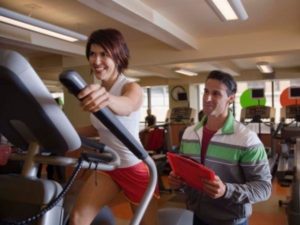In fact, older people’s cells responded in some ways more robustly to intense exercise than the cells of the young did — suggesting, he says, that it is never too late to benefit from exercise.”
The good news is that I am a multiple myeloma survivor. A long-term MM survivor. The bad news is that I live with chronic Afib, nerve damage and a substantial risk of cancer relapse or treatment-related secondary cancer. Even moderate exercise is intense for me.
Multiple Myeloma – Exercise

An important reason for my long-term myeloma survivorship is the fact that I exercise. Not intensely but frequently. My definition of moderate exercise is a slow 30 minutes on an elliptical and 30 minutes lifting weights (reps not weight) alternating days.
According to the articles linked and excerpted below my frequent, moderate exercise has changed how many of my genes express themselves.
Combine the epigenetic action of my exercise with how my:
- diet,
- nutritional supplementation,
- detox,
- mind-body therapy
and other evidence-based non-conventional cancer therapies change my genetic expression and I might just live for a few more years…
If you are also a MM survivor my guess is that you are always on the look-out for therapies to keep your MM in remission. Exercise, frequent, moderate exercise, may be just the ticket. I understand that MMers are often tired and exercise may be the last thing on our minds’.
But changing your epigenetics- how your genes express themselves, may be a key to our long-term MM survival. I’ve been in complete remission since early 1999. The only therapy that has consistently been a part of my weekly regimen in all of that time is…exercise.
To learn more about evidence-based, non-toxic myeloma therapies scroll down the page, post a question or comment and I will reply to you ASAP.
Thanks,
David Emerson
- Cancer Survivor
- Cancer Coach
- Director PeopleBeatingCancer
Recommended Reading
“Remaining physically active as we grow older could help to keep our muscles and immune systems robust, according to two inspiring new studies of older recreational cyclists.
Together, the experiments add to growing evidence that some of our assumptions about aging may be outdated and we might have more control over the process than we think.
Aging often seems inexorable and unvarying, and, in chronological terms, it is. The years mount at the same pace for each of us.
But our bodies’ responses to the passage of time can differ. While most people become frail, a few remain spry…
So for the two new studies, which were both published in Aging Cell this month, the researchers decided to refocus their inquiries and look closely at muscles and T cells, a key infection-fighting component of our immune system.
In most people, muscle health and immune response worsen after we arrive at middle age, with the effects accelerating decade by decade. But there had been hints in the first study’s data that the cyclists might be unusual in these regards.
So for one of the new studies, the researchers turned to muscle tissue that already had been biopsied from the legs of 90 of the riders. They wanted to compare various markers of muscle health and function across the riders’ age span. If the muscles of riders in their 70s resembled those of riders in their 50s, the scientists reasoned, then their physical activity most likely had altered and slowed the supposedly “normal” arc of muscular decline.
At the same time, other scientists delved into the riders’ immune systems, drawing blood from them, as well as from a group of sedentary older people and another of healthy young adults…
“…But more unexpected results were found in the biopsied muscle cells. Among the younger subjects who went through interval training, the activity levels had changed in 274 genes, compared with 170 genes for those who exercised more moderately and 74 for the weight lifters. Among the older cohort, almost 400 genes were working differently now, compared with 33 for the weight lifters and only 19 for the moderate exercisers.
Many of these affected genes, especially in the cells of the interval trainers, are believed to influence the ability of mitochondria to produce energy for muscle cells; the subjects who did the interval workouts showed increases in the number and health of their mitochondria — an impact that was particularly pronounced among the older cyclists…
It seems as if the decline in the cellular health of muscles associated with aging was “corrected” with exercise, especially if it was intense, says Dr. Sreekumaran Nair, a professor of medicine and an endocrinologist at the Mayo Clinic and the study’s senior author. In fact, older people’s cells responded in some ways more robustly to intense exercise than the cells of the young did — suggesting, he says, that it is never too late to benefit from exercise.”



